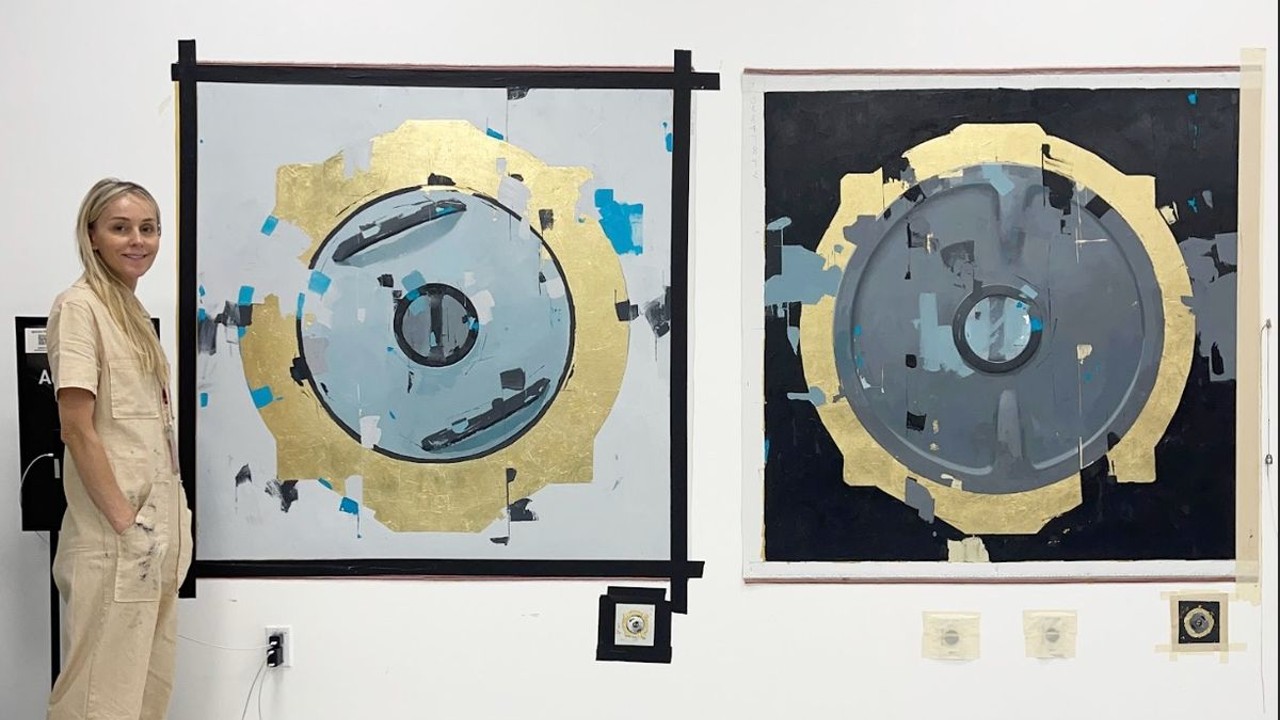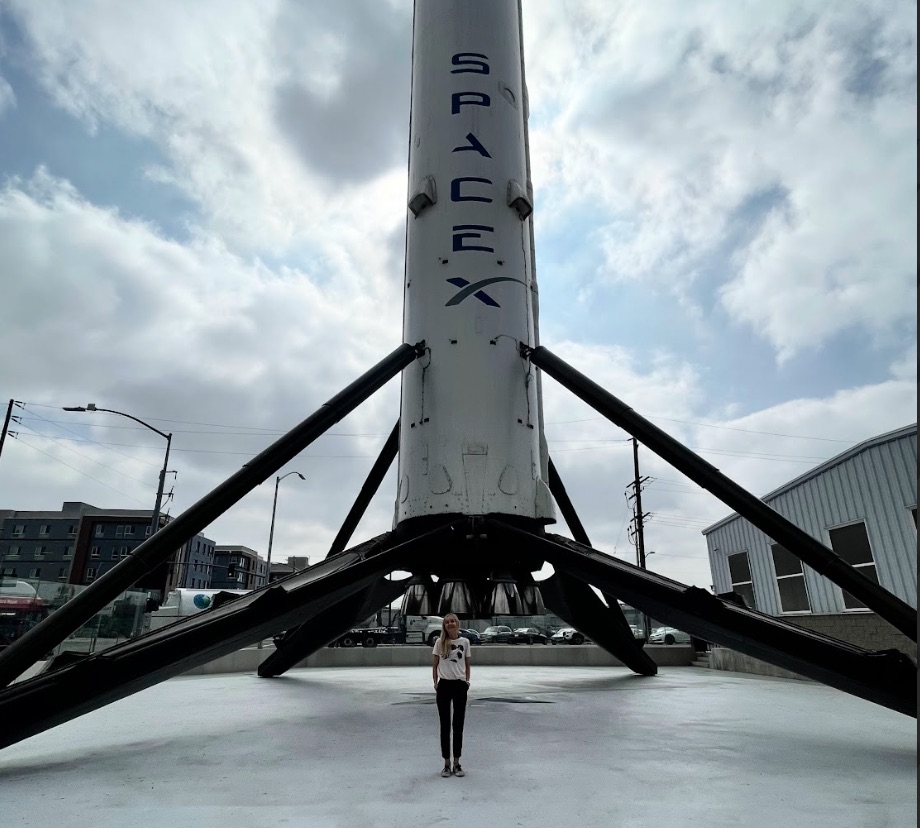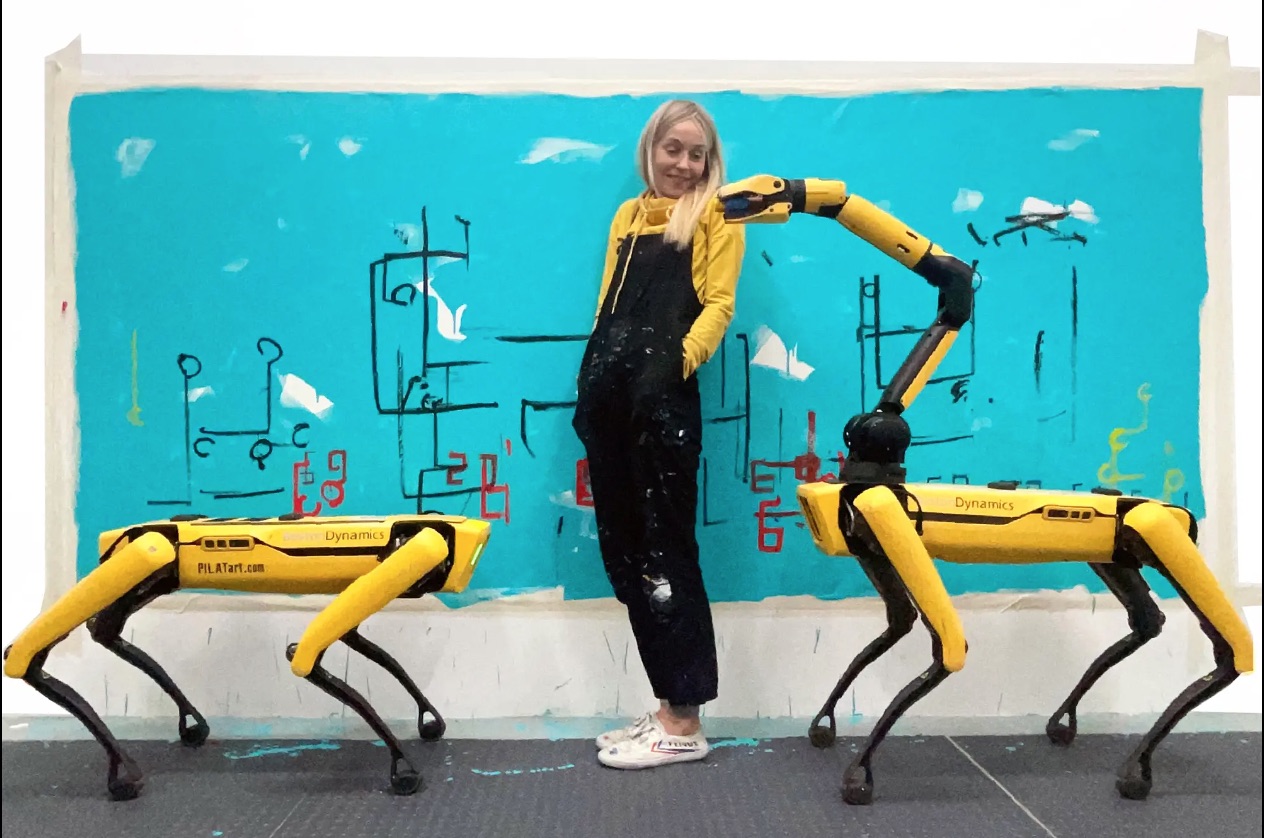SpaceX Artist-in-Residence on painting spacecraft and Starlink satellites: 'The machine is my patron' (exclusive)

Provocative Silicon Valley artist Agnieszka Pilat has strong beliefs regarding the intermingling of art, religion and technology, something that keeps her fertile muse alert amid multiple presentations, exhibitions and appearances at global events such as the recent TED AI 2023 conference in San Francisco.
The Polish-born Pilat's current SpaceX Artist-in-Residence program at the aerospace firm's Hawthorne, California facility will likely run through 2024 and comes right before a December exhibition at the National Gallery of Victoria's Triennial in Australia. There, for three months, her black-and-yellow Boston Dynamics robodogs will be creating autonomous artwork via a series of pre-programmed instructions.
Her latest portraits involve meditative theological interpretations of an air-tight hatch installed on the SpaceX Dragon capsule, accented in gold leaf designed to evoke a feeling of serene holiness encircling the revered life-sustaining object.
Space.com connected with Pilat to discuss her inspiring hatch portraits at SpaceX, her philosophies about the revered role of machines in American culture, and how god-like AI technology can be cautiously employed to create a brighter future.
Related: FAA wraps up safety review of SpaceX's huge Starship rocket
Space.com: How did you land at SpaceX as an Artist-in-Residence and what does that program entail?
Agnieszka Pilat: The broad framework of my career is that I love technology and I follow tech companies to do something exciting. SpaceX doesn't have an official residency program so I didn't follow any invitation. For these tech companies, I usually find what I think is impactful and historically important and then I try to find my way in through personal introductions.
Breaking space news, the latest updates on rocket launches, skywatching events and more!
I have a studio space set up at SpaceX's Hawthorne facility. My first number of visits this year and the year before was painting portraits of a Dragon hatch. They're super generous and they'd roll in the hatch that astronauts actually use for training, so it's the same exact replica that goes to space.
I go to SpaceX a few times a year for a week and work every day. I created a series of portraits based on the hatch and now I'm excited because Starlink is such an important technology right now. My next body of work is leaning into working on Starlink and exploring what it means to the world in a larger context. I've also done a lot of stuff with Agility Robotics in Oregon, which is super fun, so I move around a lot.
Space.com: How did your work with your quadruped SPOT robot dogs began and what sort of statement are you trying to make with their artwork?
AP: The statement is that these robots, in human years, are like children. My intention working with SPOT and the robots is to show the age of the machine as something that's still growing up. It still doesn't have personality. I'm classically trained as a portrait painter, and as a portrait painter you look for likeness. But as a good painter, you look for the essence of the subject. Working with SPOT I realized very fast that they are like a baby or young kid. The personality is not there yet.
Space.com: You've previously stated that your artwork tries to communicate "the story of America told through machines and industry and innovation." How has that philosophical concept evolved and solidified over the years?
AP: I grew up in Eastern Europe and Europe. It's a class society and in the old times it was the aristocracy. When I came to America I realized the aristocracy and the power is in technology and machines. Michelangelo would be a court painter or work for the wealthy or the church. For me, if I were in Poland during Communist years, I'd be painting Stalin and the working class. In America, I'm a court painter of the machine. I don't work for Elon Musk or Boston Dynamics or Agility. The machine is my patron.
Space.com: What influential artists of the past helped form your artistic style?
AP: I grew up around Soviet art, and as much as the message behind it is dark, Russia is a very mystical place. When it comes to the skill of painting and telling stories, Ilya Repin has always been my hero. I learned to paint copying his paintings.
And you have to always throw in Andy Warhol. He understood and had those big trends reflecting what was happening in pop culture and I really respect that.
Space.com: What are you thoughts about the promise and perils of artificial intelligence and its integrations into art, entertainment and daily Earth life?
AP: A friend of mine in Silicon Valley says if it doesn't work, they call it AI, and if it does work it's just Google Maps. I'm generally optimistic. I just did a TED AI talk and the premise was that I think that artificial intelligence is still in the very early stages. It's a great challenge but also a great opportunity for us to engage with AI and decide which direction it's going to go. I look at AI just like my robots ... like a young child.
AI has a bit of the nature of a god because it knows us so well, better than we know ourselves, which a god would. It's also immortal and not confined to a place and a time unlike robots and machines that I work with. In that sense AI is a bit like a deity. My work at SpaceX really indicated that. All the paintings have gold leaf and are based visually on Christian iconography, with auras and halos around them. There's a duality of not just power but also the promise of the hope for a better future.
I'm really excited for my work to be connected to Starlink next year because of the amount of prayers and hopes that were put into Starlink. There are a lot of parallels between religion and AI and I find that kind of exciting.
See more of Agnieszka Pilat's work at her website.

Jeff Spry is an award-winning screenwriter and veteran freelance journalist covering TV, movies, video games, books, and comics. His work has appeared at SYFY Wire, Inverse, Collider, Bleeding Cool and elsewhere. Jeff lives in beautiful Bend, Oregon amid the ponderosa pines, classic muscle cars, a crypt of collector horror comics, and two loyal English Setters.



